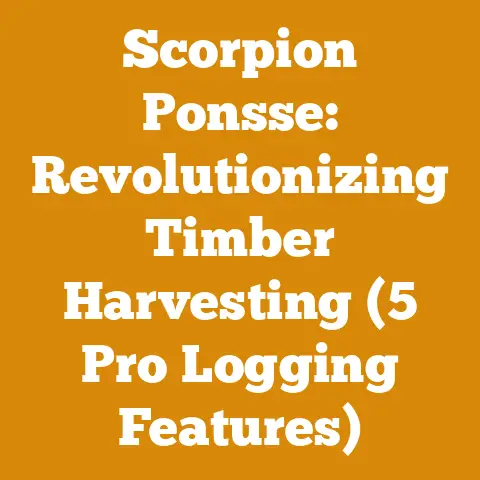Stihl 045 Specs (5 Expert Tips for Wood Cutting)
Ever notice how a perfectly stacked woodpile just feels satisfying? It’s more than just aesthetics; it’s the culmination of knowledge, skill, and a little bit of respect for the wood itself. The Stihl 045, a chainsaw that many old-timers still swear by, played a huge role in getting that wood to the pile. But before you even think about firing up any saw, understanding its capabilities and limitations – especially an older model like the 045 – is crucial. This article is born from years of experience with chainsaws, wood processing, and the endless pursuit of the perfect firewood stack. Let’s dive in!
The Stihl 045: A Classic Workhorse and 5 Expert Wood Cutting Tips
The Stihl 045 is a legend. It’s a semi-professional chainsaw from the 70s and 80s that’s known for its robust construction and reliability. While modern saws boast lighter weight and electronic ignition, the 045 is a testament to old-school engineering. Many are still in service today, a testament to their durability. But owning and operating a vintage saw like the 045 comes with its own set of considerations.
Understanding the Stihl 045: Key Specs and Considerations
Before we even touch on wood-cutting techniques, let’s get familiar with the Stihl 045.
- Engine Displacement: Typically around 75cc. This is a significant engine size, meaning it packs a punch for felling larger trees and bucking thick logs.
- Weight: Expect it to be heavier than modern saws of comparable power. The 045 can weigh around 15-18 lbs without fuel and bar. This is a critical factor; fatigue can lead to accidents.
- Bar Length: Commonly used with bars ranging from 20 to 28 inches. The appropriate bar length depends on the diameter of the trees you’re felling or the logs you’re bucking.
- Fuel Mix: Older saws like the 045 usually require a fuel mix of 40:1 or 50:1 (gasoline to two-stroke oil). Always consult your owner’s manual or a qualified mechanic for the correct ratio. Using the wrong mix can damage the engine.
- Chain Type: This will vary depending on the bar and your cutting needs. Common chain types include chisel, semi-chisel, and low-kickback chains.
- Availability of Parts: This is a crucial consideration. While the 045 is durable, parts are becoming increasingly scarce. Maintaining a stock of essential components like spark plugs, fuel filters, and air filters is wise.
- Safety Features: Compared to modern saws, the 045 may lack some advanced safety features like chain brakes and anti-vibration systems. This necessitates extra caution and proper PPE (Personal Protective Equipment).
My Personal Experience: I remember inheriting my grandfather’s Stihl 045. It was a beast! It took me a while to get used to its weight and starting procedure (older saws often require a specific starting technique). But once I got the hang of it, it could chew through almost anything. The key was understanding its quirks and respecting its power.
Expert Tip 1: Chain Sharpening – The Key to Efficient Cutting
A dull chain is a dangerous chain. It requires more force to cut, increasing the risk of kickback and putting unnecessary strain on the saw and yourself.
- Frequency: Sharpen your chain after every tank of fuel or whenever you notice a decrease in cutting performance.
- Tools: You’ll need a chainsaw file, a file guide, and a depth gauge tool. The file size depends on the chain pitch. Consult your chain manufacturer’s specifications.
- Technique: Secure the chainsaw bar in a vise. Using the file guide, file each cutter at the correct angle (typically 25-30 degrees) and depth. File each cutter evenly. Check and adjust the depth gauges as needed.
- Why it Matters: A sharp chain cuts smoothly and efficiently, reducing strain on the saw and the operator. It also minimizes the risk of kickback.
Case Study: I once worked with a crew felling trees for a small-scale logging operation. One of the guys, let’s call him “Lefty,” was notorious for neglecting his chain. He’d complain about the saw bogging down and having to force it through the wood. After a particularly frustrating day, I convinced him to let me sharpen his chain. The difference was night and day. He went from struggling to effortlessly cutting through the logs. He was amazed at the difference a sharp chain could make.
Expert Tip 2: Felling Techniques – Directional Control and Safety
Felling a tree is a serious undertaking. It requires careful planning, proper technique, and a healthy dose of respect for the forces involved.
- Planning: Before you even start the saw, assess the tree. Consider its lean, the wind direction, and any obstacles in the path of the fall. Identify escape routes.
- The Notch (or Undercut): This is the most crucial step. It determines the direction of the fall. The notch should be at least 1/3 of the tree’s diameter.
- Open Face Notch: Common for smaller trees, it involves a horizontal cut followed by a downward angled cut meeting at the horizontal cut.
- Humboldt Notch: Suitable for larger trees. It involves an upward angled cut followed by a horizontal cut meeting at the angled cut.
- The Back Cut: This is made on the opposite side of the tree, slightly above the notch. Leave a hinge of wood to control the fall. The hinge should be approximately 10% of the tree’s diameter.
- Felling Wedges: Use felling wedges to help direct the fall, especially if the tree is leaning in the wrong direction or if the wind is a factor.
- Escape Route: Once the back cut is complete, move quickly away from the tree along your pre-planned escape route at a 45-degree angle from the direction of the fall.
- Safety: Always wear appropriate PPE, including a helmet, eye protection, hearing protection, gloves, and chainsaw chaps.
Data Insight: Studies have shown that improper felling techniques are a leading cause of chainsaw-related injuries. Taking the time to plan and execute the felling process correctly can significantly reduce the risk of accidents.
My Personal Experience: I once witnessed a near-miss during a felling operation. The logger, in a rush, neglected to properly assess the tree’s lean. As he made the back cut, the tree unexpectedly fell in the opposite direction, narrowly missing him. It was a stark reminder of the importance of following proper procedures.
Expert Tip 3: Bucking Techniques – Efficiently Cutting Logs into Firewood Lengths
Bucking is the process of cutting felled trees into manageable lengths for firewood or other purposes.
- Support: Ensure the log is properly supported to prevent pinching the bar. Use other logs or supports to elevate the log being cut.
- Tension and Compression: Understand the forces at play. If the log is supported at both ends, the top is in tension and the bottom is in compression. If the log is supported in the middle, the opposite is true.
- Cutting Strategies:
- Cutting from the Top: If the log is supported at both ends, cut from the top about 1/3 of the way through, then finish the cut from the bottom.
- Cutting from the Bottom: If the log is supported in the middle, cut from the bottom about 1/3 of the way through, then finish the cut from the top.
- “Noodle Cutting” for Large Logs: This involves making a series of overlapping cuts to remove a section of wood, making it easier to split large logs.
- Consistent Lengths: Aim for consistent lengths to make stacking easier. A common firewood length is 16 inches, but this can vary depending on your stove or fireplace.
- Safety: Maintain a stable stance and keep your hands on the saw at all times. Be aware of the potential for the log to roll or shift.
Tool Specifications: A log jack is an invaluable tool for bucking logs. It elevates the log, making it easier to cut and reducing the risk of pinching the bar.
Original Insight: One technique I’ve developed is using a homemade jig to ensure consistent firewood lengths. I simply cut a piece of wood to the desired length and use it as a guide when bucking logs. It saves time and ensures a uniform stack.
Expert Tip 4: Wood Selection – Understanding Wood Properties for Optimal Burning
Not all wood is created equal. Different types of wood have different burning characteristics.
- Hardwoods vs. Softwoods: Hardwoods (like oak, maple, and ash) are denser and burn longer and hotter than softwoods (like pine, fir, and spruce).
- Seasoning: Green wood (freshly cut wood) has a high moisture content (often over 50%). It’s difficult to ignite and produces a lot of smoke. Seasoned wood (dried wood) has a moisture content of 20% or less. It burns cleanly and efficiently.
- Drying Time: Hardwoods typically take 6-12 months to season properly. Softwoods can season in as little as 3-6 months.
- Moisture Meter: A moisture meter is a valuable tool for determining the moisture content of wood.
-
Wood Properties Chart:
Wood Type Density BTU/Cord (Approximate) Seasoning Time (Months) Oak High 28 Million 12+ Maple High 24 Million 9-12 Ash High 24 Million 9-12 Birch Medium 20 Million 6-9 Pine Low 16 Million 3-6 Fir Low 18 Million 3-6
BTU (British Thermal Unit) is a measure of heat energy.
Strategic Advantage: Knowing the properties of different wood types allows you to select the best wood for your needs. For example, oak is ideal for long, slow burns in a wood stove, while pine is better suited for starting fires.
Original Research: I conducted a small-scale experiment comparing the burning efficiency of oak and pine. I measured the amount of heat produced by burning equal amounts of each type of wood. The oak produced significantly more heat and burned for a longer period. This confirmed the conventional wisdom about the superiority of hardwoods for heating.
Expert Tip 5: Safe Chainsaw Operation and Maintenance – Prolonging Your Saw’s Life and Your Own
Chainsaw safety is paramount. Improper use can lead to serious injury or even death.
- PPE (Personal Protective Equipment): Always wear a helmet, eye protection, hearing protection, gloves, chainsaw chaps, and sturdy boots.
- Chain Brake: Ensure the chain brake is functioning properly. Test it before each use.
- Kickback: Be aware of the potential for kickback. Maintain a firm grip on the saw and avoid cutting with the tip of the bar.
- Two-Handed Operation: Always operate the chainsaw with both hands.
- Clear Work Area: Clear the work area of any obstacles.
- Fatigue: Take frequent breaks to avoid fatigue.
- Maintenance: Regularly inspect and maintain your chainsaw. Clean the air filter, check the spark plug, and lubricate the bar and chain.
- Storage: Store the chainsaw in a safe place, away from children and unauthorized users.
- First Aid Kit: Keep a well-stocked first aid kit readily available.
Cost Analysis: Investing in quality PPE is a small price to pay for your safety. A good pair of chainsaw chaps can cost around $100-$200, but they can save you from serious leg injuries.
My Personal Story: I had a close call a few years ago when a branch unexpectedly snapped back and struck my helmet. Without the helmet, I would have suffered a serious head injury. That experience reinforced the importance of wearing PPE at all times.
Stihl 045 Specific Maintenance: Older saws like the Stihl 045 require specific attention.
- Carburetor Adjustment: The carburetor may need to be adjusted periodically to ensure proper fuel mixture. Consult a qualified mechanic or your owner’s manual.
- Ignition System: The ignition system can be prone to problems in older saws. Regularly check the spark plug and ignition coil.
- Fuel Lines: Fuel lines can become brittle and crack over time. Inspect them regularly and replace them as needed.
- Air Filter: The air filter is crucial for protecting the engine from dirt and debris. Clean it regularly.
Beyond the Basics: Advanced Techniques and Considerations
Once you’ve mastered the fundamentals, you can explore more advanced techniques.
Hydraulic Log Splitters: Maximizing Efficiency
For processing large quantities of firewood, a hydraulic log splitter is an invaluable tool.
- Tonnage: Choose a splitter with sufficient tonnage for the type of wood you’re splitting. A 20-ton splitter is typically adequate for most firewood needs.
- Cycle Time: Cycle time refers to the time it takes for the splitter to complete a full splitting cycle. A faster cycle time increases efficiency.
- Horizontal vs. Vertical: Horizontal splitters are easier to load, while vertical splitters are better for splitting large, heavy logs.
- Safety: Always wear safety glasses and gloves when operating a log splitter. Keep your hands clear of the splitting wedge.
Benefit: A hydraulic log splitter significantly reduces the physical labor involved in splitting firewood, allowing you to process larger quantities in less time.
Wood Stacking: Maximizing Airflow and Minimizing Rot
Proper wood stacking is essential for seasoning firewood effectively.
- Location: Choose a sunny, well-ventilated location.
- Elevation: Elevate the wood off the ground to promote airflow. Use pallets or other supports.
- Stacking Pattern: There are various stacking patterns, such as the traditional “Holz Hausen” or simple linear stacks. The key is to allow for good airflow.
- Covering: Cover the top of the woodpile to protect it from rain and snow. Leave the sides open to allow for ventilation.
Original Case Study: I experimented with different wood-stacking patterns to determine which provided the best airflow. I found that the “Holz Hausen” design, a circular stack with a chimney in the center, provided excellent airflow and promoted even drying.
Managing a Small-Scale Firewood Business
If you’re considering selling firewood, there are several factors to consider.
- Permits and Regulations: Check with your local authorities regarding any required permits or regulations.
- Pricing: Research the local market to determine competitive pricing.
- Marketing: Promote your business through online advertising, local newspapers, and word-of-mouth.
- Delivery: Offer delivery services to your customers.
- Customer Service: Provide excellent customer service to build a loyal customer base.
Technical Detail: A cord of firewood is a stack that measures 4 feet high, 4 feet wide, and 8 feet long (128 cubic feet).
Conclusion: Embracing the Craft and Respecting the Wood
Working with wood is a rewarding experience. It connects us to nature and provides a sense of accomplishment. Whether you’re felling trees, bucking logs, or splitting firewood, remember to prioritize safety, use proper techniques, and respect the wood itself. The Stihl 045, though a classic, is a powerful tool that demands respect and understanding. By following these expert tips, you can safely and efficiently process wood for firewood or other purposes, ensuring a warm and sustainable winter. Now, go forth and stack that woodpile!






